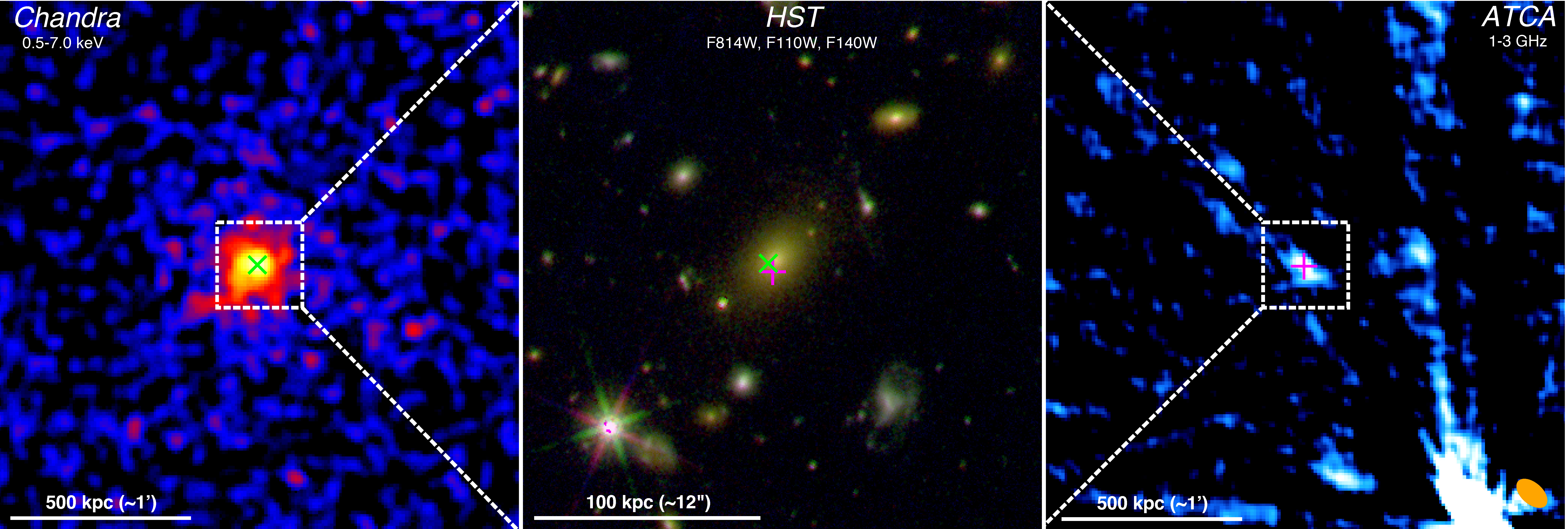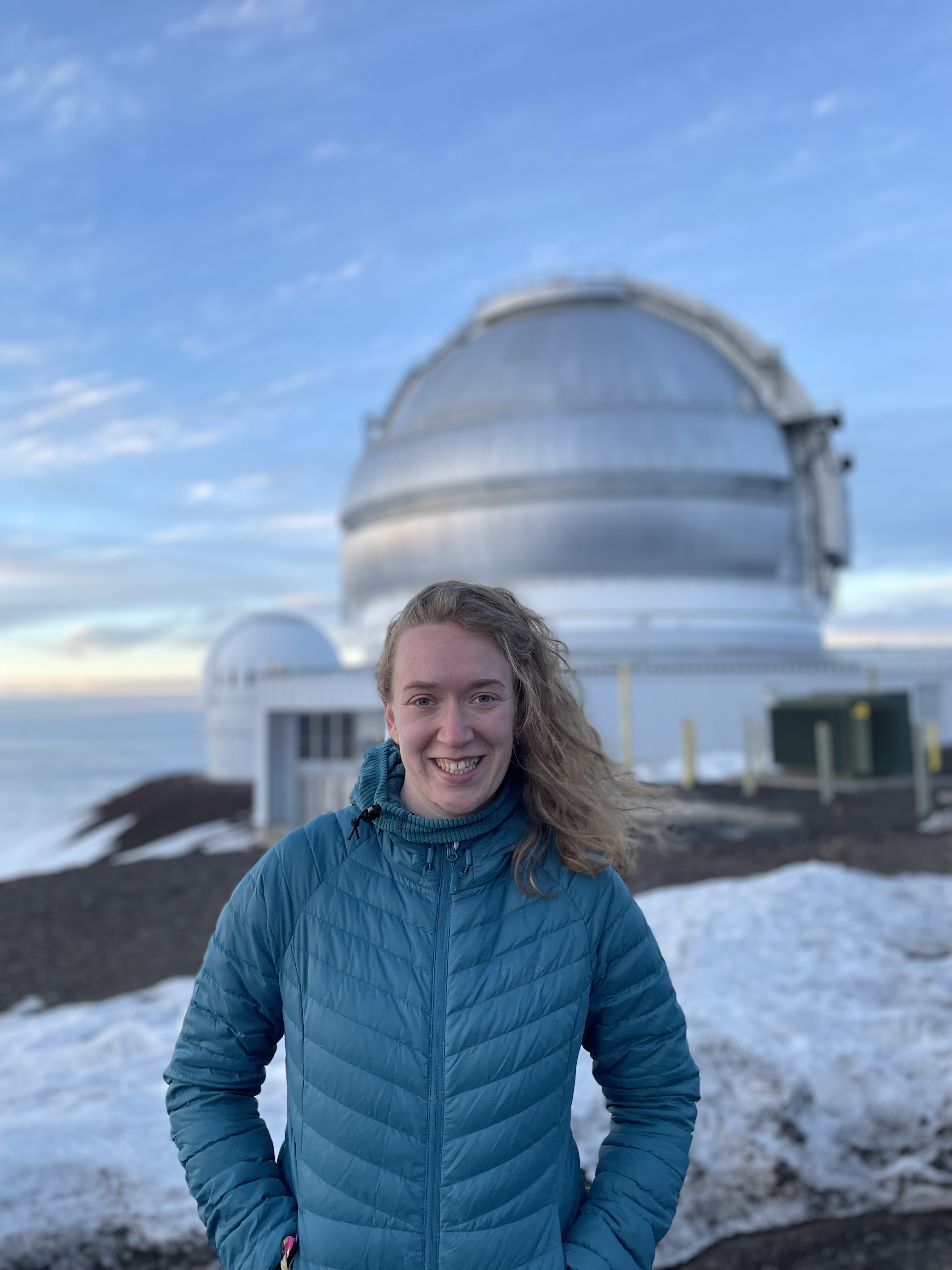Research Interests
Nuclear Transients & Extreme Accretion Physics
Nuclear transients are a broad class of astronomical transients which occur in the nuclei of galaxies and are associated with transient accretion episodes onto supermassive black holes. They often have highly variable emission in many different wavelength bands, including X-ray, optical, infrared, and radio! These exciting objects allow us astronomers to probe extreme accretion physics around supermassive black holes.
Tidal Disruption Events (TDEs)
When an unfortunate star wanders just a little too close to a supermassive black hole, the tidal forces of the black hole can exceed the star’s self-gravity, leading to the star being torn apart and becoming an afternoon snack for a previously quiescent black hole. This leads to a flare of electromagnetic emission across a variety of wavelengths, allowing us to study these previously invisible supermassive black holes. Currently the field of TDE populations is exploding, thanks primarily to cadenced all-sky surveys in the optical and X-ray. However, there is increasing evidence that suggests that these surveys are only capturing part of the picture, as reflected in their preference for a rare class of galaxies call post-starburst systems. It has been suggested that this bias could result from the optical and X-ray bands requiring a relatively unobscured sight line to the nucleus.
To this end, I recently began using mid-IR data from the WISE satellite to discover TDEs in dusty environments. While TDE accretion disks do not radiate significantly in the mid-IR, dust clouds surrounding the SMBH can produce luminous mid-IR echoes, by which we can detect new TDEs. Our initial search revealed the closest TDE discovered to date (Panagiotou et al. 2023), suggesting that the IR population of TDEs is significant and must be included to fully understand TDE demographics. In Masterson et al. (2024), we found an initial sample of 12 nearby, IR-selected TDEs within 200 Mpc. This sample of IR-selected TDEs presents the first evidence for the missing population of dust-obscured TDEs and roughly doubles the local TDE rate. Interestingly, none of the IR-selected TDEs are found in post-starbust galaxies, suggesting that there is some selection bias in optical and X-ray surveys. These IR-selected TDEs are also helpful in alleviating the so-called “missing energy problem” in TDEs, as the dust can act as a bolometer for the total radiated energy (much of which is thought to be in the extreme UV, which we are otherwise unable to probe). There’s so much more we can do with this sample, so keep your eyes peeled for more exciting results!

Changing-Look AGN
Nuclear transients can occur in actively accreting systems, too. In some active galactic nuclei (AGN), there are relatively “rapid” changes to the accretion state, marked by either the appearance or disappearance of broad emission lines in the optical part of the spectrum. The unified model of AGN suggests that whether or not we see broad emission lines in the optical spectrum is a consequence of our viewing angle to the nucleus; namely, broad lines are only seen if our sight line is not blocked by the dusty torus. However, changing-look AGN break this paradigm and do so much faster than we ever expected based on the standard viscous timescale in AGN (which sets the time it takes to propagate mass inwards and cause significant changes to the accretion flow). I’m fascinated by these systems and am working to better understand what could drive such changes and how our X-ray view of the inner accretion flow can inform this.
During the first two years of my PhD, I worked on two particularly unique changing-look AGN. The first, 1ES 1927+654, is one of the weirdest AGN we know. It is first changing-look AGN that was caught in the act of changing states (as first presented in Trakhtenbrot et al. (2019)) and the first AGN in which we witnessed the X-ray corona disappear (see Ricci et al. (2020)). In Masterson et al. (2022a), I worked on understanding the full X-ray outburst from this system, spanning over three years in duration with hundreds of X-ray observations from many different observatories. We tracked the re-formation of the X-ray corona in this system and the evolution of a peculiar broad 1 keV emission line. This line can be modeled with relativistic reflection occurring in an optically and geometrically thick inner accretion flow, which fits in with the picture put forth by Ricci et al. (2020) that the corona was destroyed by a TDE occurring in the existing accretion disk.

The other intriguing changing-look AGN I’ve worked on is the candidate binary supermassive black hole AT2019cuk/Tick Tock/SDSS J1430. This source was first suggested to be a binary supermassive black hole within 3 years of merging by Jiang et al. (2022), based on a decreasing periodic signal in ZTF data and interesting optical broad line evolution. If truly a binary, this would be the first chance to witness an electromagnetic merger of two supermassive black holes, which is highly anticipated given the next generation gravitational wave detectors (e.g. LISA) and the highly uncertain electromagnetic emission in these events. However, after tracking this system for 8 months, we found no periodic behavior in X-ray, UV, or optical emission, thus challenging the binary hypothesis. The high-cadence NICER monitoring we performed (with ~2 observations per day every day for 8 months) revealed these repetitive and stochastic hard X-ray flares that have never been seen before in an AGN. We present these results in Masterson et al. (2023b), and suggest three potential models for the flares, the most likely of which we expect to be the variable corona model, in which the flares arise from intrinsic changes to the corona due to increased magnetization levels.

High Resolution X-ray Spectroscopy of Nearby AGN
During my Masters work at the University of Cambridge, I worked with data from the High Energy Transmission Grating on the Chandra X-ray Observatory to probe the narrow Fe K$\alpha$ line around nearby AGN. In Masterson et al. (2022b), we used three different spectral orders to disentangle the effect of velocity broadening (which is constant across different spectral orders) and spatial extent (which primarily effects the lower order spectra). This new technique provides unique constraints on the location of the emitting material, which is nearly impossible to do with standard imaging techniques, even with the best resolution provided by Chandra. In the future, I’m interested in applying similar techniques with the new XRISM mission.
AGN Feedback and the Evolution of Galaxy Clusters
I am also broadly interested in how accretion can impact a black hole’s surroundings, and have worked on this avenue by exploring AGN feedback in galaxy clusters as a senior undergrad and during the first year of my PhD. In Masterson et al. (2023a), I worked with Prof. Mike McDonald on a particularly interesting system at z $\sim$ 1.4 (which is high redshift for galaxy clusters!). This system looked surprisingly like many of the low-redshift galaxy clusters that have been studied for the last few decades – namely, it showed a strong cool core in the X-rays with a strong radio source associated with the brightest cluster galaxy (BCG) that had enough power to offset the X-ray cooling luminosity and prevent the gas from cooling. Essentially, this high-redshift cluster showed well-regulated AGN feedback, where the central supermassive black hole in the BCG is able to prevent gas in the galaxy cluster from cooling! This is the most distant cluster we know of that has these properties, and thus, it helps set limits on when AGN feedback became a well-regulated and normal process in the universe!

